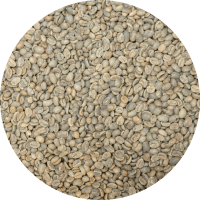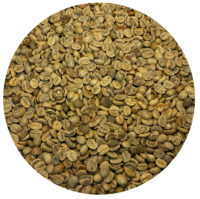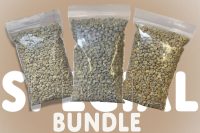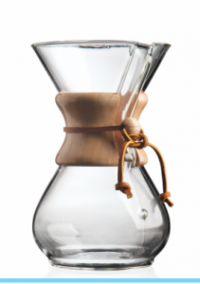Description
A very nice fresh top lot arrival!
These beans are coming from family-owned farms around the Chelelektu dry mill in the Kochere woreda of the Gedeo region. The combination of very high altitude and iron-rich, acidic soil creates the ideal growing situation to produce the bright, floral and fruity Yirgacheffe profile.
Tasting Notes:
Noticeable but not over the top fruit tones, a decent shot at a little darker berry note. Lighter roasts will have a little citrus floral crispness upfront but medium roasts and darker will be low acidity. The cup is a little fuller bodied than average with that nice sweeter red fruit tone fading into a bit of a chocolaty cup. Some of that classic Yirg tea like attributes can be found especially if you roast the cup a bit darker, which reduces the fruity tones and accentuates the spice.
Roasting Notes:
Nice and easy to roast for a natural but a higher chaff coffee. Best served at a light to medium roast. Might see a couple outlier beans but judge the roast by the bulk of beans, not the outliers. Setup is crucial for this cup, try and wait 36 hours before drinking to get a decently smoother and richer cup.
The Chelelektu washing station was built in 2010 and processes up to 950,000kg of ripe coffee cherries each year from its 363 contributing producers. Since 2014, the washing station has improved its infrastructure and processes coffee with fresh, clean water with a ph of 8.5. Coffees are dried on 134 raised beds in the sun across the washing stations almost 3 hectares of land. There are 12 fermentation tanks for soaking washed coffees, which then take around 18 days to dry.
Chelelektu farmers are small-scale growers who bring their ripe cherries to the Chelelektu washing station for processing. Farmers around Chelelektu have trees at elevations ranging from 1300-2200 meters above sea level, making it one of the most altitudinally diverse washing stations in Yirgacheffe. The small springs and streams that make up the water for fermentation and leave the cherries perfectly fermented in around 37 hours. The reaction of Chelelektu’s water with the heirloom varietals grown there leaves the fermenting coffee a brilliant red color that is characteristic of this micro-region.
The Chelelektu washing station is named for its location in Chelelektu, the town–known as a kebele–in the Kochere district of the broader Yirgacheffe coffee area.
Kurume is one of Ethiopia’s regional land race varieties from Yirgacheffe. Surveys carried out between 1989 and 1994 help identify local land races by name. Prior to the 1970’s there was essentially no intentional breeding or variety selection at a national level in Ethiopia; individual farmers selected seeds locally to reproduce their crop. But a devastating epidemic of coffee berry disease in the 1960’s led researchers to establish the Jimma Agricultural Research Center (JARC) and begin cataloging coffee trees that demonstrated resistance to both coffee berry disease and drought as well as producing high yields.
These selections were approached as a national crop improvement program, but in the fields the newly selected and resistant varieties did not perform optimally in climates different from that of Jimma, where the plants had been bred. Researchers at JARC pivoted, cataloging and selecting local landrace varieties that were both naturally suited to the environments where they already grew and representative of the cup flavor profiles of Ethiopia’s many coffee growing regions.
Kurume is one of the regional landraces identified in the Yirgacheffe area. As with many regional landraces, the names applied to the coffee varieties are borrowed from the names of indigenous trees. The Kurume tree bears small fruit with a good annual year, similar to Kurume coffee’s small cherries and bountiful harvest. Kurume is a commonly grown variety among farmers in Guji and Gedeo, which includes Yirgacheffe. Sometimes, the Kurume name is applied to JARC-selected varieties due to the similarities in the trees’ appearance.
Dega is another regional landrace named for an indigenous tree. The wood of the Dega tree omits a sweet, fragrant aroma when burned for firewood, similar to the smell of coffee roasting. The Amharic word “dega” means “cool highland area,” which is also applicable to the agroecological conditions where Dega coffee grows.
Wolisho is yet another regional landrace named for a tree indigenous to Gedeo and the surrounding area. This tree bears large fruit with inconsistent yearly yields. Wolisho coffee has large cherries and long leaves.
Chelelektu coffee is prepped for export at Tracon Trading’s coffee cleaning and storage plant on 30,000 sq meters of land in Addis Ababa. The plant is equipped with modern Pinhalense coffee processing machines and a Buhler Z+ color sorter. The machine has the capacity of processing six tons per hour. All the processing jobs are mechanical and electronic including final hand picking on conveyor belts. The six storage silos of the plant have a capacity of accommodating about 15,000 metric tons of coffee at a time. The warehouses are clean, with ample lighting and ventilation, which are very ideal for keeping the quality of the coffee.






Reviews
There are no reviews yet.